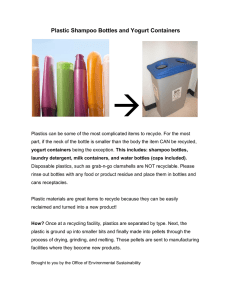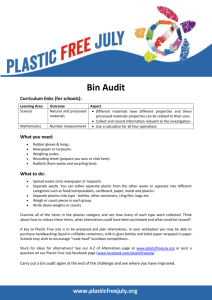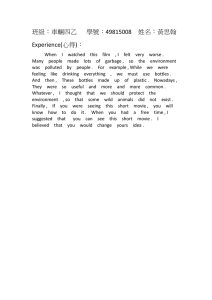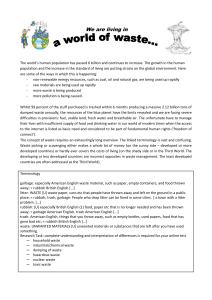The terms “plastic #1” and “plastic #2” refer to a plastic container`s
advertisement
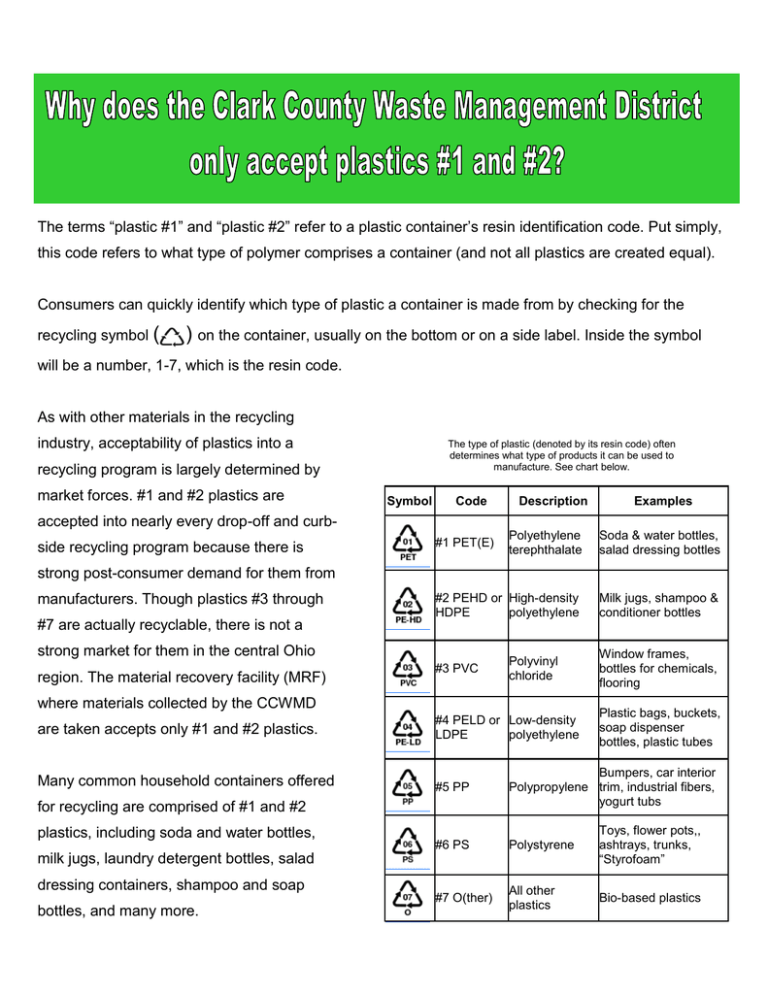
The terms “plastic #1” and “plastic #2” refer to a plastic container’s resin identification code. Put simply, this code refers to what type of polymer comprises a container (and not all plastics are created equal). Consumers can quickly identify which type of plastic a container is made from by checking for the recycling symbol ( ) on the container, usually on the bottom or on a side label. Inside the symbol will be a number, 1-7, which is the resin code. As with other materials in the recycling industry, acceptability of plastics into a The type of plastic (denoted by its resin code) often determines what type of products it can be used to manufacture. See chart below. recycling program is largely determined by market forces. #1 and #2 plastics are Symbol Code accepted into nearly every drop-off and curbside recycling program because there is Description Examples Polyethylene terephthalate Soda & water bottles, salad dressing bottles #2 PEHD or High-density HDPE polyethylene Milk jugs, shampoo & conditioner bottles #1 PET(E) strong post-consumer demand for them from manufacturers. Though plastics #3 through #7 are actually recyclable, there is not a strong market for them in the central Ohio region. The material recovery facility (MRF) #3 PVC Polyvinyl chloride where materials collected by the CCWMD Window frames, bottles for chemicals, flooring Plastic bags, buckets, soap dispenser bottles, plastic tubes are taken accepts only #1 and #2 plastics. #4 PELD or Low-density LDPE polyethylene Many common household containers offered #5 PP Bumpers, car interior Polypropylene trim, industrial fibers, yogurt tubs #6 PS Polystyrene Toys, flower pots,, ashtrays, trunks, “Styrofoam” #7 O(ther) All other plastics Bio-based plastics for recycling are comprised of #1 and #2 plastics, including soda and water bottles, milk jugs, laundry detergent bottles, salad dressing containers, shampoo and soap bottles, and many more.

